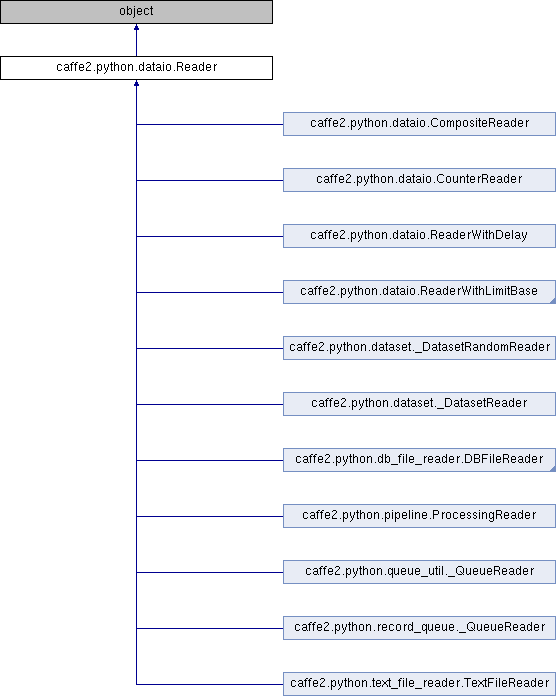|
|
def | __init__ (self, schema=None) |
| |
|
def | schema (self) |
| |
| def | setup_ex (self, init_net, finish_net) |
| |
|
def | read_ex (self, local_init_net, local_finish_net) |
| |
|
def | read_record_ex (self, local_init_net, local_finish_net) |
| |
| def | read (self, read_net) |
| |
| def | reset (self, net) |
| |
|
def | read_record (self, read_net) |
| |
| def | execution_step (self, reader_net_name=None, external_should_stop=None) |
| |
Reader is an abstract class to be implemented in order to provide
operations capable of iterating through a dataset or stream of data.
A Reader must implement at least one operation, `read`, which
adds operations to a net that read the next batch of data. Readers can
optionally support the `reset` operation, which is useful when multiple
passes over the data are required.
Definition at line 29 of file dataio.py.
| def caffe2.python.dataio.Reader.execution_step |
( |
|
self, |
|
|
|
reader_net_name = None, |
|
|
|
external_should_stop = None |
|
) |
| |
Create an execution step with a net containing read operators.
The execution step will contain a `stop_blob` that knows how to stop
the execution loop when end of data was reached.
E.g.:
read_step, fields = reader.execution_step()
consume_net = core.Net('consume')
consume_net.Print(fields[0], [])
p = core.Plan('reader')
p.AddStep(read_step.AddNet(consume_net))
core.RunPlan(p)
Args:
reader_net_name: (optional) the name of the reader_net to be
created. The execution step will
be named accordingly.
Returns:
A tuple (read_step, fields), with:
read_step: A newly created execution step containing a net with
read operations. The step will have `stop_blob` set,
in order to stop the loop on end of data.
fields: A tuple of BlobReference containing the latest batch
of data that was read.
Definition at line 107 of file dataio.py.
| def caffe2.python.dataio.Reader.read |
( |
|
self, |
|
|
|
read_net |
|
) |
| |
Append operations to read_net that will read a batch from the
underlying data soruce.
Operations added to `read_net` must be thread safe and atomic, that is,
it should be possible to clone `read_net` and run multiple instances of
it in parallel.
Args:
read_net: the net that will be appended with read operations
Returns:
A tuple (should_stop, fields), with:
should_stop: BlobReference pointing to a boolean scalar
blob that indicates whether the read operation
was succesfull or whether the end of data has
been reached.
fields: A tuple of BlobReference containing the latest batch
of data that was read.
Definition at line 71 of file dataio.py.

 1.8.11
1.8.11